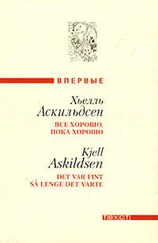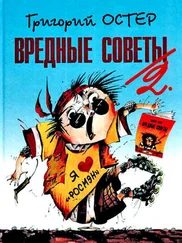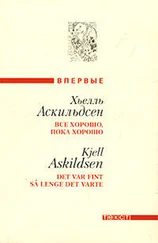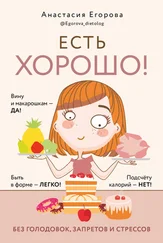Эмили Остер - Всё хорошо!
Здесь есть возможность читать онлайн «Эмили Остер - Всё хорошо!» — ознакомительный отрывок электронной книги совершенно бесплатно, а после прочтения отрывка купить полную версию. В некоторых случаях можно слушать аудио, скачать через торрент в формате fb2 и присутствует краткое содержание. Год выпуска: 2020, ISBN: 2020, Издательство: Манн, Иванов и Фербер, Жанр: sci_pedagogy, на русском языке. Описание произведения, (предисловие) а так же отзывы посетителей доступны на портале библиотеки ЛибКат.
- Название:Всё хорошо!
- Автор:
- Издательство:Манн, Иванов и Фербер
- Жанр:
- Год:2020
- ISBN:9785001690887
- Рейтинг книги:5 / 5. Голосов: 1
-
Избранное:Добавить в избранное
- Отзывы:
-
Ваша оценка:
- 100
- 1
- 2
- 3
- 4
- 5
Всё хорошо!: краткое содержание, описание и аннотация
Предлагаем к чтению аннотацию, описание, краткое содержание или предисловие (зависит от того, что написал сам автор книги «Всё хорошо!»). Если вы не нашли необходимую информацию о книге — напишите в комментариях, мы постараемся отыскать её.
Всё хорошо! — читать онлайн ознакомительный отрывок
Ниже представлен текст книги, разбитый по страницам. Система сохранения места последней прочитанной страницы, позволяет с удобством читать онлайн бесплатно книгу «Всё хорошо!», без необходимости каждый раз заново искать на чём Вы остановились. Поставьте закладку, и сможете в любой момент перейти на страницу, на которой закончили чтение.
Интервал:
Закладка:
8.Mennella J. A., Trabulsi J. C. Complementary foods and flavor experiences : Setting the foundation // Annals of Nutrition and Metabolism. 2012. № 60 (Suppl 2). Р. 40–50.
9.Mennella J. A., Nicklaus S., Jagolino A. L., Yourshaw L. M. Variety is the spice of life : Strategies for promoting fruit and vegetable acceptance during infancy // Physiology & Behavior. 2008. № 94 (1). Р. 29–38; Mennella J. A., Trabulsi J. C. Complementary foods and flavor experiences.
10.Atkin D. The caloric costs of culture : Evidence from Indian migrants // The American Economic Review. 2016. № 106 (4). Р. 1144–1181.
11.Leung A. K., Marchand V., Sauve R. S. The «picky eater» : The toddler or preschooler who does not eat // Paediatrics & Child Health. 2012. № 17 (8). Р. 455–460.
12.Fries L. R., Martin N., Van der Horst K. Parent-child mealtime interactions associated with toddlers’ refusals of novel and familiar foods // Physiology & Behavior. 2017. № 176. Р. 93–100.
13.Birch L. L., Fisher J. O. Development of eating behaviors among children and adolescents // Pediatrics. 1998. № 101 (3 Pt 2). Р. 539–549; Lafraire J., Rioux C., Giboreau A., Picard D. Food rejections in children : Cognitive and social/ environmental factors involved in food neophobia and picky/ fussy eating behavior // Appetite. 2016. № 96. Р. 347–357.
14.Perkin M. R., Logan K., Tseng A., Raji B., Ayis S., Peacock J., et al. Randomized trial of introduction of allergenic foods in breast-fed infants // The New England Journal of Medicine. 2016. № 374 (18). Р. 1733–1743; Natsume O., Kabashima S., Nakazato J., Yamamoto-Hanada K., Narita M., Kondo M., et al. Two-step egg introduction for prevention of egg allergy in high-risk infants with eczema (PETIT) : A randomised, double-blind, placebo-controlled trial // Lancet. 2017. № 389 (10066). Р. 276–286; Katz Y., Rajuan N., Goldberg M. R., Eisenberg E., Heyman E., Cohen A., Leshno M. Early exposure to cow’s milk protein is protective against IgE-mediated cow’s milk protein allergy // The Journal of Allergy and Clinical Immunology. 2010. № 126 (1). Р. 77–82.
15.Hopkins D., Emmett P., Steer C., Rogers I., Noble S., Emond A. Infant feeding in the second 6 months of life related to iron status : An observational study // Archives of Disease in Childhood. 2007. № 92 (10). Р. 850–854.
16.Pegram P. S., Stone S. M. Botulism. UpToDate. URL: http://www.uptodate.com/contents/botulism.
17.Emmerson A. J. B., Dockery K. E., Mughal M. Z., Roberts S. A., Tower C. L., Berry J. L. Vitamin D status of white pregnant women and infants at birth and 4 months in North West England : A cohort study // Maternal & Child Nutrition. 2018. № 14 (1).
18.Greer F. R., Marshall S. Bone mineral content, serum vitamin D metabolite concentrations, and ultraviolet B light exposure in infants fed human milk with and without vitamin D 2supplements // The Journal of Pediatrics. 1989. № 114 (2). Р. 204–212; Naik P., Faridi M. M. A., Batra P., Madhu S. V. Oral supplementation of parturient mothers with vitamin D and its effect on 25OHD status of exclusively breastfed infants at 6 months of age : A double-blind randomized placebo controlled trial // Breastfeeding Medicine. 2017. № 12 (10). Р. 621–628.
19.Naik P. et al. Oral supplementation of parturient mothers with vitamin D; Thiele D. K., Ralph J., El-Masri M., Anderson C. M. Vitamin D 3supplementation during pregnancy and lactation improves vitamin D status of the mother-infant dyad // Journal of Obstetric, Gynecologic, & Neonatal Nursing. 2017. № 46 (1). Р. 135–147.
Глава 13. Когда ребенок пойдет: физиологические вехи
1.Serdarevic F., Van Batenburg-Eddes T., Mous S. E., et al. Relation of infant motor development with nonverbal intelligence, language comprehension and neuropsychological functioning in childhood : A population-based study // Developmental Science. 2016. № 19 (5). Р. 790–802.
2.Murray G. K., Jones P. B., Kuh D., Richards M. Infant developmental milestones and subsequent cognitive function // Annals of Neurology. 2007. № 62 (2). Р. 128–136.
3.Much of the discussion here comes from Voigt R. G. Developmental and behavioral pediatrics / Eds. by M. M. Macias and S. M. Myers. American Academy of Pediatrics, 2011.
4.Barkoudah E., Glader L. Epidemiology, etiology and prevention of cerebral palsy. UpToDate. URL: https://www.uptodate.com/contents/cerebral-palsy-epidemiology-etiology-and-prevention.
5.WHO Motor Development Study : Windows of achievement for six gross motor development milestones // Acta Paediatrica. 2006. № 450. Р. 86–95.
6.WHO Motor Development Study.
7.Pappas D. The common cold in children : Clinical features and diagnosis. UpToDate. URL: https://www.uptodate.com/contents/the-common-cold-in-children-clinical-features-and-diagnosis.
8.Pappas D. The common cold in children.
9.Klein J., Pelton S. Acute otitis media in children : Epidemiology, microbiology, clinical manifestations, and complications. UpToDate. URL: https://www.uptodate.com/contents/acute-otitis-media-in-children-epidemiology-microbiology-clinical-manifestations-and-complications.
Глава 14. Маленькие Эйнштейны против телевизора
1.Barr R., Hayne H. Developmental changes in imitation from television during infancy // Child Development. 1999. № 70 (5). Р. 1067–1081.
2.Kuhl P. K., Tsao F. M., Liu H. M. Foreign-language experience in infancy : Effects of short-term exposure and social interaction on phonetic learning // Proceedings of the National Academy of Sciences USA. 2003. № 100 (15). Р. 9096–9101.
3.DeLoache J. S., Chiong C. Babies and baby media // American Behavioral Scientist. 2009. № 52 (8). Р. 1115–1135.
4.Robb M. B., Richert R. A., Wartella E. A. Just a talking book? Word learning from watching baby videos // British Journal of Developmental Psychology. 2009. № 27 (Pt 1). Р. 27–45.
5.Richert R. A., Robb M. B., Fender J. G., Wartella E. Word learning from baby videos // Archives of Pediatrics & Adolescent Medicine. 2010. № 164 (5). Р. 432–437.
6.Rice M. L., Woodsmall L. Lessons from television : Children’s word learning when viewing // Child Development. 1988. № 59 (2). Р. 420–429.
7.Bogatz G. A., Ball S. The Second Year of Sesame Street : A Continuing Evaluation (vol. 1). Princeton, NJ : Educational Testing Service, 1971.
8.Kearney M. S., Levine P. B. Early childhood education by MOOC : Lessons from Sesame Street // National Bureau of Economic Research working paper no. 21229. June 2016.
9.Nathanson A. I., Aladé F., Sharp M. L., Rasmussen E. E., Christy K. The relation between television exposure and executive function among preschoolers // Developmental Psychology. 2014. № 50 (5). Р. 1497–1506.
10.Crespo C. J., Smit E., Troiano R. P., Bartlett S. J., Macera C. A., Andersen R. E. Television watching, energy intake, and obesity in US children : Results from the third National Health and Nutrition Examination Survey, 1988–1994 // Archives of Pediatrics & Adolescent Medicine. 2001. № 155 (3). Р. 360–365.
11.Zimmerman F. J., Christakis D. A. Children’s television viewing and cognitive outcomes : A longitudinal analysis of national data // Archives of Pediatrics & Adolescent Medicine. 2005. № 159 (7). Р. 619–625.
Читать дальшеИнтервал:
Закладка:
Похожие книги на «Всё хорошо!»
Представляем Вашему вниманию похожие книги на «Всё хорошо!» списком для выбора. Мы отобрали схожую по названию и смыслу литературу в надежде предоставить читателям больше вариантов отыскать новые, интересные, ещё непрочитанные произведения.
Обсуждение, отзывы о книге «Всё хорошо!» и просто собственные мнения читателей. Оставьте ваши комментарии, напишите, что Вы думаете о произведении, его смысле или главных героях. Укажите что конкретно понравилось, а что нет, и почему Вы так считаете.











